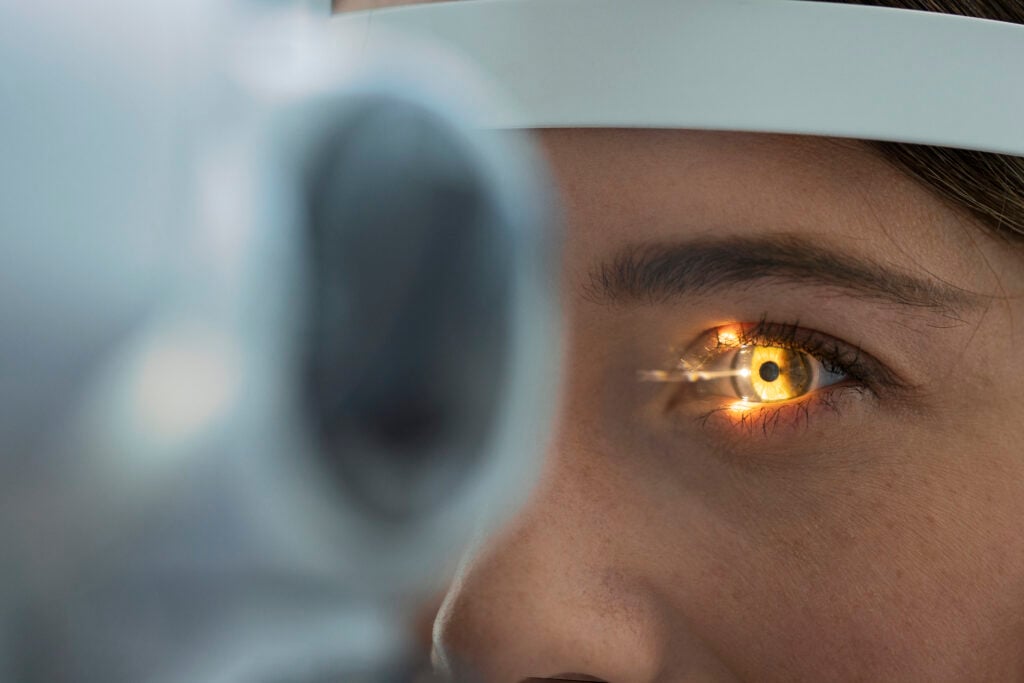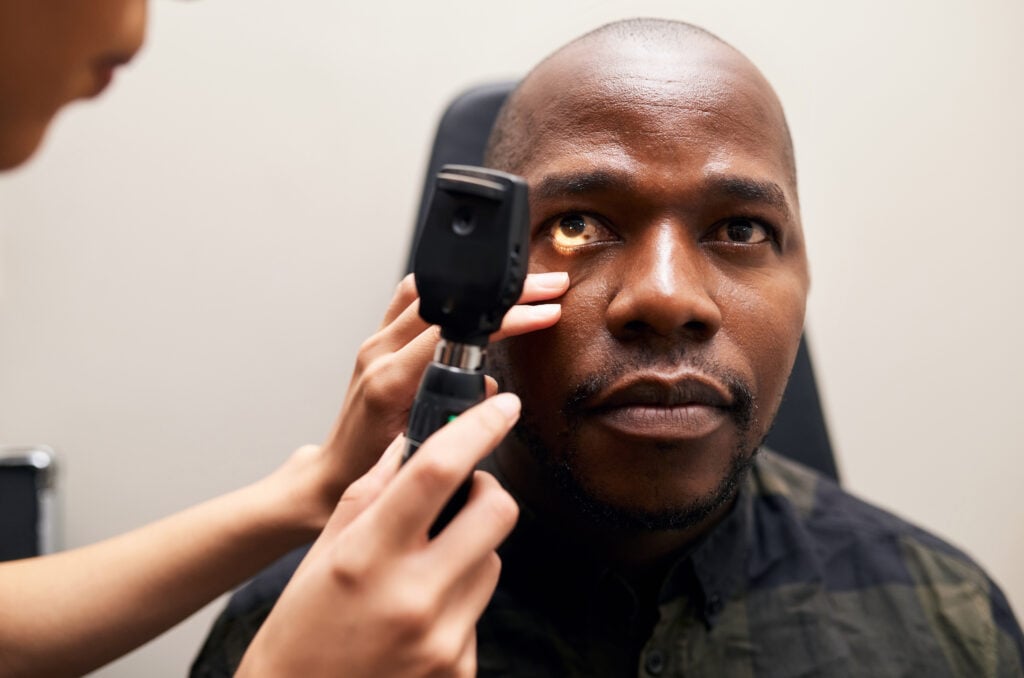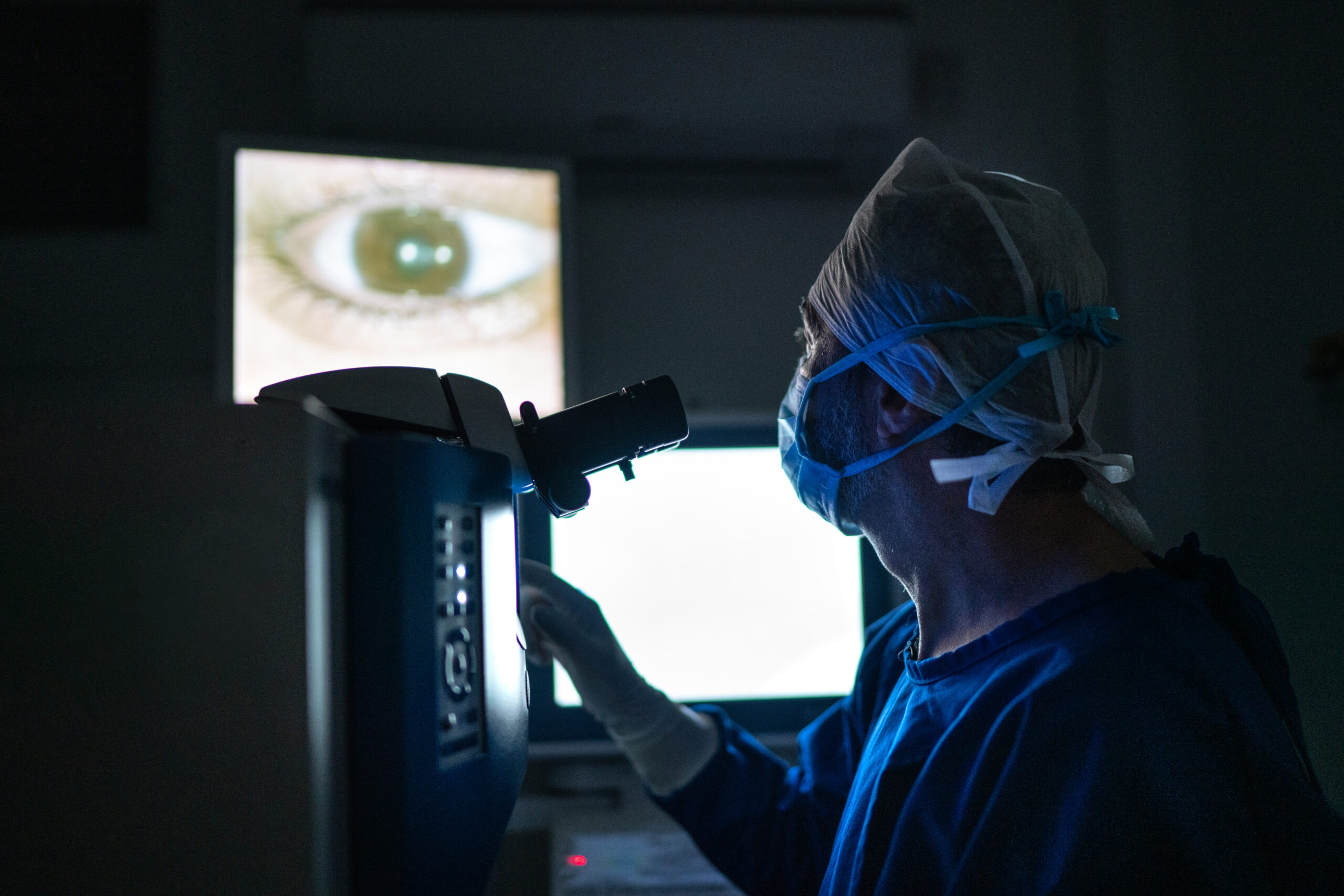Ophthalmology (Eye)
Samaritan Medical Center and local Ophthalmologists offer comprehensive eye care needs for our community. Taking care of your eyes is important from childhood to adulthood. Ophthalmology is a medical specialty focusing on the prevention, diagnosis and medical and surgical treatment of vision problems and eye disease.

Proudly Offering Laser Assisted Cataract Surgery
Samaritan Medical Center and Dr. Noaman Sanni are pleased to bring Laser Assisted Cataract Surgery to Northern New York. Our patients now have the option of choosing a computer-controlled bladeless cataract laser for their cataract surgery procedure. Laser Assisted Cataract Surgery is the most technologically advanced option for cataract patients today. A custom map is made of your eye which means the cataract surgery procedure is 100% customized. The laser uses integrated optical coherence tomography (OCT) which captures precise, high resolution images of your eyes. The laser uses a femtosecond laser to make the corneal incisions, break apart the cloudy cataract lens and create a perfect size opening in the clear covering of the eye lens, where the cataract forms.
Laser Assisted Cataract Surgery automates the most challenging steps of traditional cataract surgery. Prior to the introduction of this laser, traditional cataract surgery involved the creation of several small incisions during the procedure. All of these incisions were made manually with a blade. With LenSx, the surgeon can create those incisions with a significantly higher degree of precision. This combined with the real-time image guided feature aids the physician in seeing the activity taking place in the eye during surgery.
To learn more about laser cataract surgery, call Dr. Noaman Sanni’s office at 315-286-2721
Common Conditions to Treat
- Amblyopia (lazy eye)
- Blurred vision
- Cataracts
- Conjunctivitis (pink eye)
- Corneal ulcers
- Detached or torn retina
- Cervical or lumbar radiculopathy
- Diabetic retinopathy
- Dry eye
- Eye injuries caused by sun exposure, dust, chemicals or foreign objects
- Floaters and flashes
- Glaucoma
- Infections
- Low vision
- Macular degeneration
- Ptosis (drooping eyelid)
- Strabismus (crossed eyes)
- Styes or chalazions
- Tumors

Common Ophthalmology Procedures
- Cataract surgery
- Corneal refractive therapy
- Corneal transplant
- Detached retina repair
- Endoscopic Cyclophotocoagulation (ECP – for glaucoma)
- Artificial corneal transplants (Boston K-Pro)
- Glaucoma surgery
- Clear lens exchange (after cataract surgery)
- LASIK/refractive surgery
- Pterygium surgery (growth on the cornea)
- Retinal laser surgery for diabetic and glaucoma eye diseases
- Strabismus surgery
- Blepharoplasty (eyelid surgery)

Ahmed Valve Express Shunt (Advanced Glaucoma Procedure)
Glaucoma is a complex eye disease in which circulation of the fluid in the eye is disrupted. This blockage stops the process of re-absorption of eye fluid leading to high pressure rise in the within the eye. This high pressure can ultimately affect the optic nerve, which can lead to permanent vision loss. Your eye doctor can conduct complete eye exams to see if you have glaucoma or are at risk.
In 80% of glaucoma cases, medicine or laser surgery is used to control glaucoma. Sometimes, if neither of these treatments is effective, glaucoma valves are necessary.
A glaucoma valve, implanted during outpatient surgery, consists of a small plate with a unique valve system that regulates eye pressure. Implant surgery immediately reduces pressure by giving fluid a means to drain more effectively. The eye surgeons at SMC prefer to use one of the most proven implants on the market – the Ahmed Glaucoma Valve.
DSEK Corneal Transplants
A new technique being used in some types of corneal transplants means a shorter recovery time for patients and may lead to even better vision after surgery. The technique, known as Descemet’s Stripping Endothelial Keratoplasty (DSEK), allows surgeons to remove a much thinner layer of the patient’s cornea compared with older methods of transplantation. Standard corneal transplants involve removal of the full thickness of the patient’s cornea and replacement with full thickness donor tissue. In the newer method, surgeons remove only the diseased layer of cells at the back of the cornea and replace it with a similar amount of donor tissue. Doing so helps to retain the structural integrity and mechanical strength of the eye and typically means a shorter recovery period for the patient.

